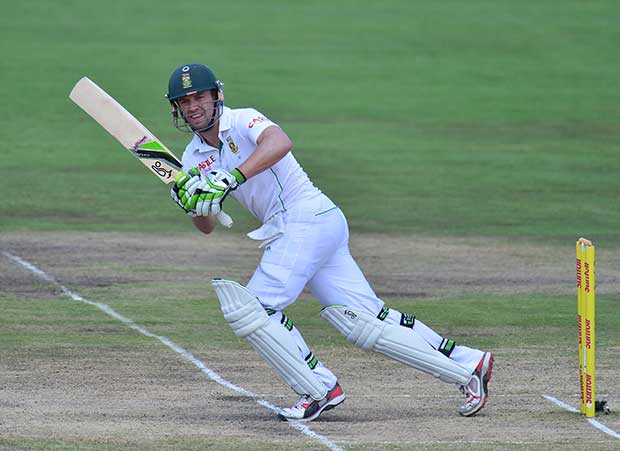AB de Villiers is the best batsman in international cricket – and he is South African.
He captains the Proteas ODI side and would be an automatic World XI selection in every format of the game. He has prospered with the responsibility of leadership when many supremely talented batsmen before him have floundered, lost their way and never recovered their mojo.
His presence gives South Africa realism about any World Cup-winning ideals, but the World Cup is not a tournament that will be won by De Villiers alone. He knows that. So does Hashim Amla and the world’s best fast bowler, Dale Steyn. The balance of the Proteas ODI XI is not complete and it is doubtful it will be. The quality of player to fill the void left by this generation’s greatest cricketer, Jacques Kallis, is just not there.
Kallis was the dream cricketer. Good enough to open the bowling, good enough to open the batting and good enough to field at first slip.
There is no replacement for Kallis among this generation of cricketers and no teenage schoolboy has yet to produce an all-round effort that could be likened to being the next Kallis.
De Villiers now wears the crown as South Africa’s most prized scalp. Amla is brilliant and when he and De Villiers are in the same batting zone as a partnership, the Proteas usually win.There was a time when the Proteas and Australia dominated the 50-over game but there isn’t a dominant ODI force among the current top six.If the Proteas fail at the World Cup, it won’t be a surprise. If they succeed, it won’t be a surprise either.
Kallis lacked acknowledgement because of the many big tournament failures of the Proteas. De Villiers must not be similarly insulted. Value the privilege it is to watch one of the greatest batsman ever because he is a combination of Herschelle Gibbs and Kallis.
Gibbs was too talented to compromise his flamboyance. He never had to work for runs in his youth and when the eyes and feet started to fail, so did the extravagant innings. He did not have the appetite to evolve, mould and develop a game that betrayed his natural attacking instinct.
De Villiers, as a young man, played in the company of Gibbs and Kallis, and he showed the intent to match Gibbs for extravagance. Critically, he took more from watching Kallis and learned from a player he described as the world’s best.
Kallis taught De Villiers about the value of a wicket. He inspired De Villiers through his run accumulation as much as Gibbs did with his haste to dismantle attacks. Gibbs was often accused of giving it away through ego, whereas Kallis’ appetite for runs didn’t allow for those moments of disregard for consequence.
The great entertainers usually can’t find the logic in compromise because of a match situation. Gibbs was one and Kevin Pietersen another.
Kallis could entertain but he could also appear robotic to those who feast on a highlights package. Gibbs and Pietersen played several of the great ODI innings, but Kallis played more understated and significant innings.
De Villiers is a rarity in that he can play like Kallis one over and be Gibbs or Pietersen-like in the next.
The opposition know the respect De Villiers has for the game and his craft. The captaincy has also allowed for him to show his intelligence as a thinking cricketer who wants to be in control. He takes responsibility for perceived failures.
In the recent 4-1 series defeat against Australia, De Villiers was explosive and consistently destructive at the crease. He scored heavily and easily, but he refused to indulge in the statistics, saying he made mistakes in the match context with shot selection and with not prizing his wicket enough. He said he expected more of himself and that he couldn’t demand shot-selection application from those who follow when his dismissals were soft.
De Villiers doesn’t want to be the Gibbs who gives his side a start or the Kallis who fights amid the chaos of a top-order batting collapse. He wants to be the one who his teammates turn to for inspiration in every situation. He wants to be a batsman who is as strong when charging a bowler as he is when taking it in the ribs. He has succeeded because his cricketing brain is more powerful than his ego to entertain. He can play any shot and he can dominate any bowler. But he respects the game’s flow enough to know it takes only one ball to end his innings.His stated objective was to be remembered as the world’s best batsman and one of the greats.
He wanted to be known as the guy who could score runs against anyone, anywhere and at any pace.
What makes him special is his ability to fight when the natural movement fails him. When the eyes aren’t as quick and the feet and hands don’t find common ground, he still finds a way to score runs.
He is the only batsman in the world who has looked in control against Mitchell Johnson in the past 18 months. He destroyed Steyn in a 27-run over in the IPL. No batsman has ever treated Steyn’s bowling with such disregard.
De Villiers dismissed the cameo as one of those moments when it all clicked and reinforced his view that Steyn was the best fast bowler in the world.
Steyn’s response was to applaud his national teammate after every blow. Johnson, in his Test battle against De Villiers at Centurion, showed similar respect to a batsman with a desire to fight that matched his ability.
De Villiers is a leader and not just a batsman. He plays for the good of the team and not self-gratification. And he has done so without compromise.
This column appears in the current issue of Business Day/Sunday Times Sport Monthly.







